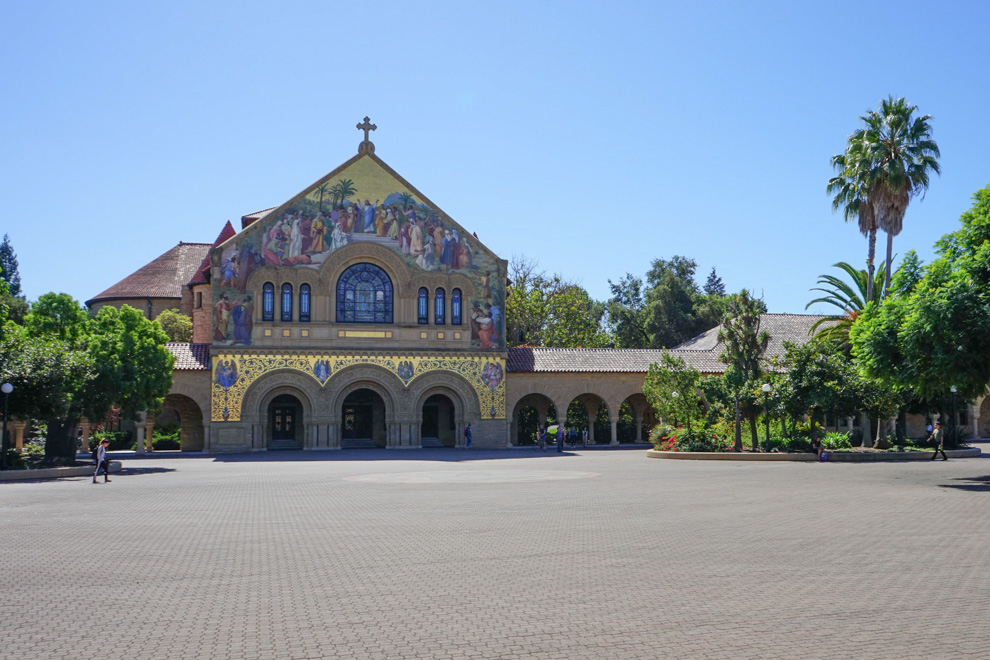Two swastikas were found drawn in a hallway in Memorial Church, according to an email sent to the Stanford community on Tuesday. Stanford administrators and student leaders strongly condemned the act, with student leaders expressing a desire for action from the University.
The Stanford University Department of Public Safety (SUDPS) is investigating the vandalism as a hate crime, and the drawings were discovered on Monday by an Office of the Religious Life staff member, according to Stanford News. Religious Life staff believe they were drawn after July 10, or possibly as early as the weekend of July 4, according to the University.
There is no suspect at this time, SUDPS spokesperson Bill Larson wrote in the statement to The Daily.
SUDPS also investigated a potential anti-Semitic hate crime earlier this year. A bench on Palm Drive was defaced with a dead rat on top of what appeared to be a Star of David. That investigation remains open, also with no suspects at this time, according to Larson.
Stanford President Marc Tessier-Lavigne condemned the Memorial Church vandalism, telling Stanford News that “The swastika is a symbol of hate, an expression of anti-Semitism and intolerance that has no place anywhere on our campus.”
“I want to convey my sorrow and anger at this violation and affirm that no graffiti can sway our University’s commitment to create a community where all are welcomed and affirmed,” Dean for Religious Life Tiffany Steinwert told Stanford News.
Gabriela Goldberg ’21 and Avi Kaye ’21, co-presidents of the Jewish Student Association (JSA), wrote in a statement to The Daily that they were “deeply horrified to see yet another act of hatred on our campus.”
Expressing appreciation that the University’s email denounced intolerance at Stanford, the co-directors urged the community to “to treat this incident — as well as all hateful words, symbols and actions — with the severity it demands.”
“It is imperative that Stanford take meaningful steps to prioritize the safety of the Jewish community, alongside all those who are targeted by hatred and bigotry,” Goldberg and Kaye wrote.
“The Jewish Student Association refuses to let ourselves be defined by those who seek to intimidate or threaten us,” Goldberg and Kaye wrote. “We invite any members of the Jewish community to reach out — now and anytime — to us or anyone on Hillel staff if you would like to talk.”
Zohar Levy ’22, head of the Stanford Israel Association, thought the University’s email was “as sufficient as it could be” while leaving some questions about the vandalism unanswered, and expressed a desire for more action from the University.
“‘Isn’t it locked? Aren’t there cameras? Was it a staff member?’ but I do understand that the purpose of the email was to focus on the University’s solidarity with the Jewish community,” Levy wrote.
Larson wrote that there were no obvious signs of forced entry, and that it was unknown how the suspect or suspects entered.
“I would like to see more direct action on behalf of the University that demonstrates an effort to combat antisemitism, such as working more closely with Hillel or off-campus organizations such as the Anti-Defamation League,” Levy wrote.
More attention is needed to acts of anti-Semitism on campus that may be less visible, Levy said, describing experience with complaints of anti-Semitism that were shrugged off.
“Many times the antisemitism that happens at Stanford is not public or visible,” Levy wrote. “In my own Stanford experience, complaints of antisemitism have been responded with ‘Our hands are tied,’ ‘There’s nothing we can do’ and ‘We spoke to the student in question.’’
“While we have seen pictures or heard stories of the swastikas drawn around campus these past few years, what is less talked about are the day to day conversations about Jews,” Levy added. “And I’m sure all kinds of racism, bigotry and hate toward other identity groups at Stanford experience similar difficulties: It is impossible to prove something hateful that someone said, and it is difficult to speak up when someone makes a prejudiced comment.”
Emma Talley contributed reporting.
Contact Anastasia Malenko at malenk0 ‘at’ stanford.edu.
